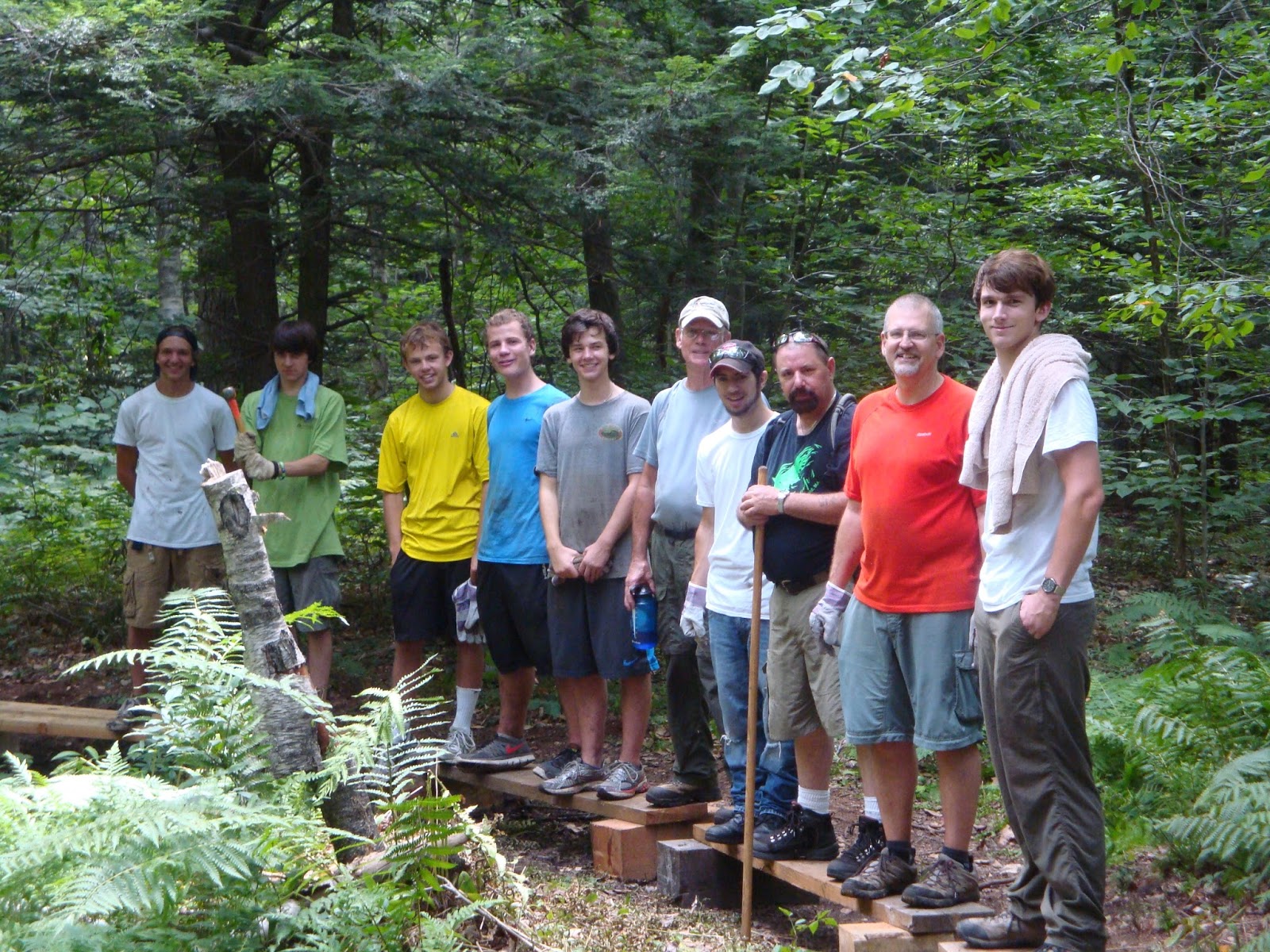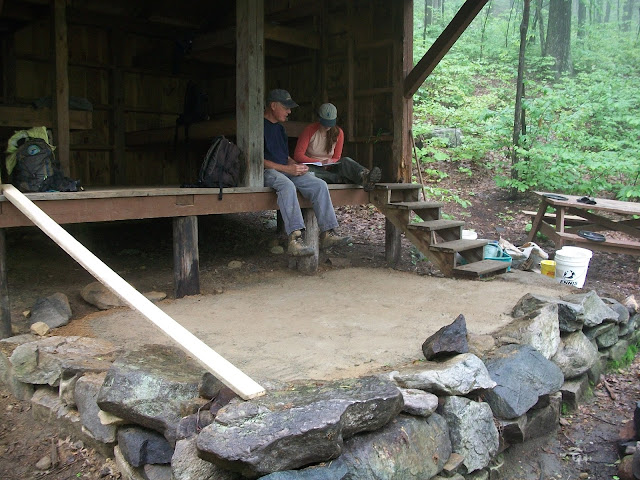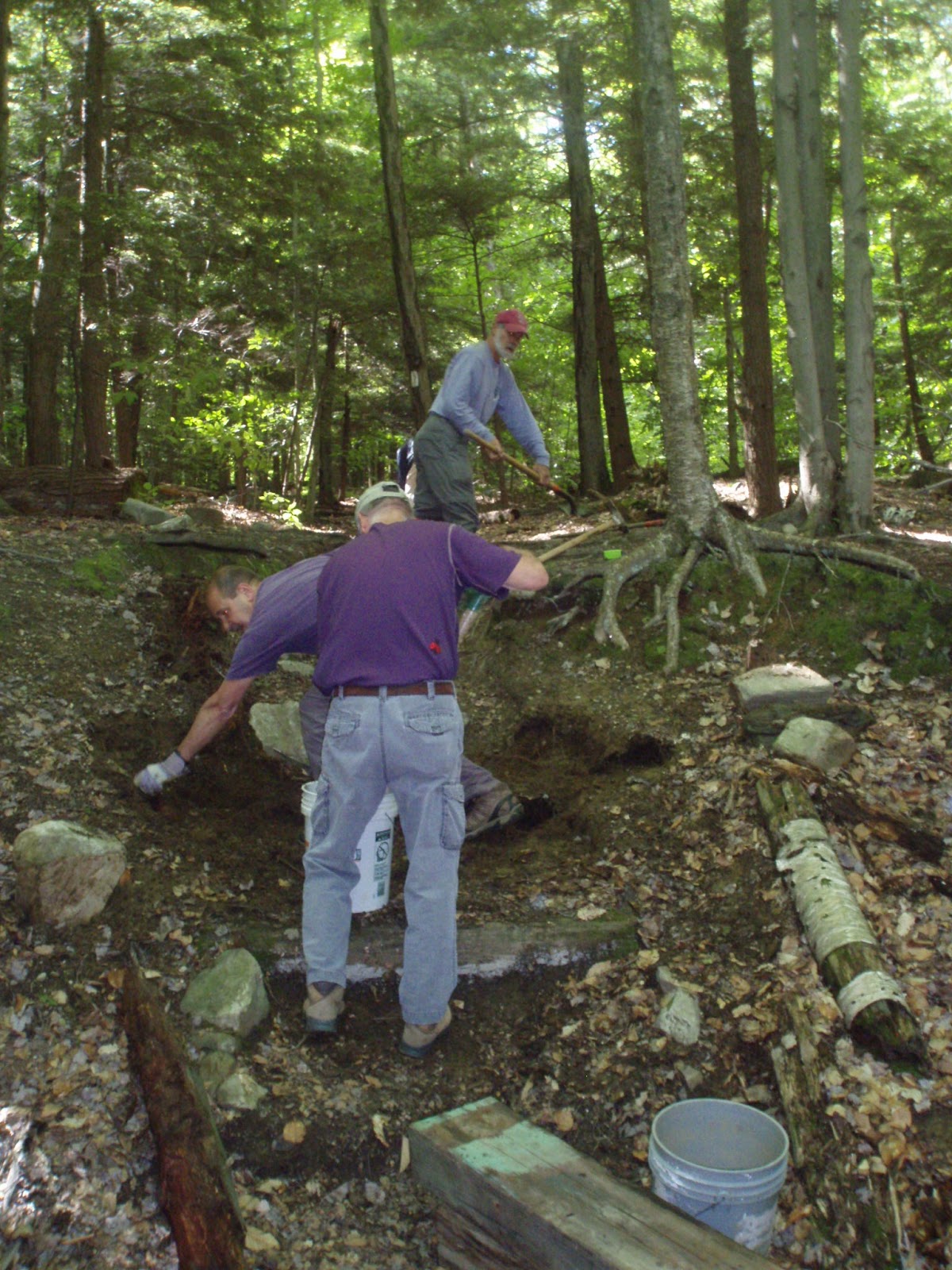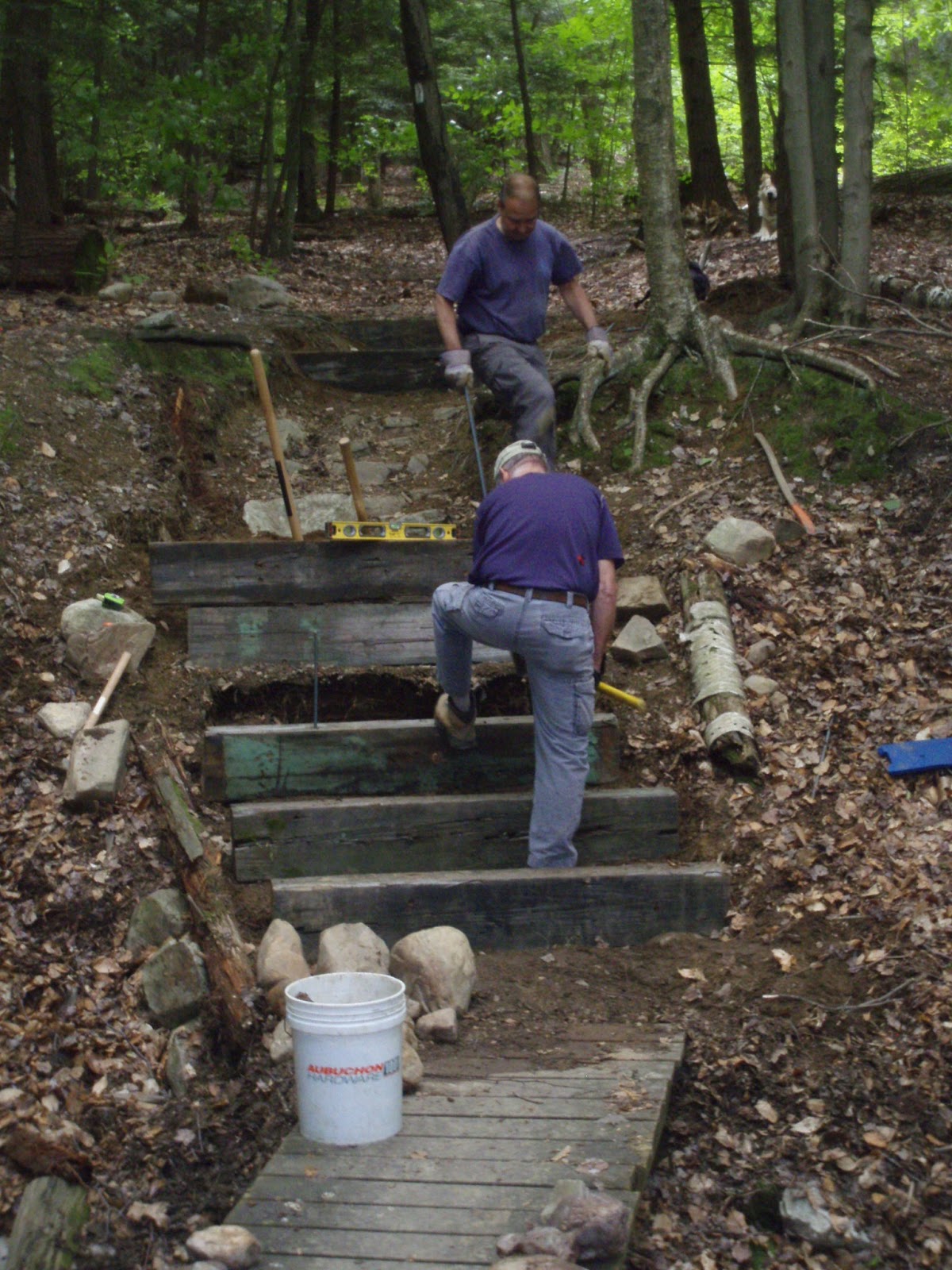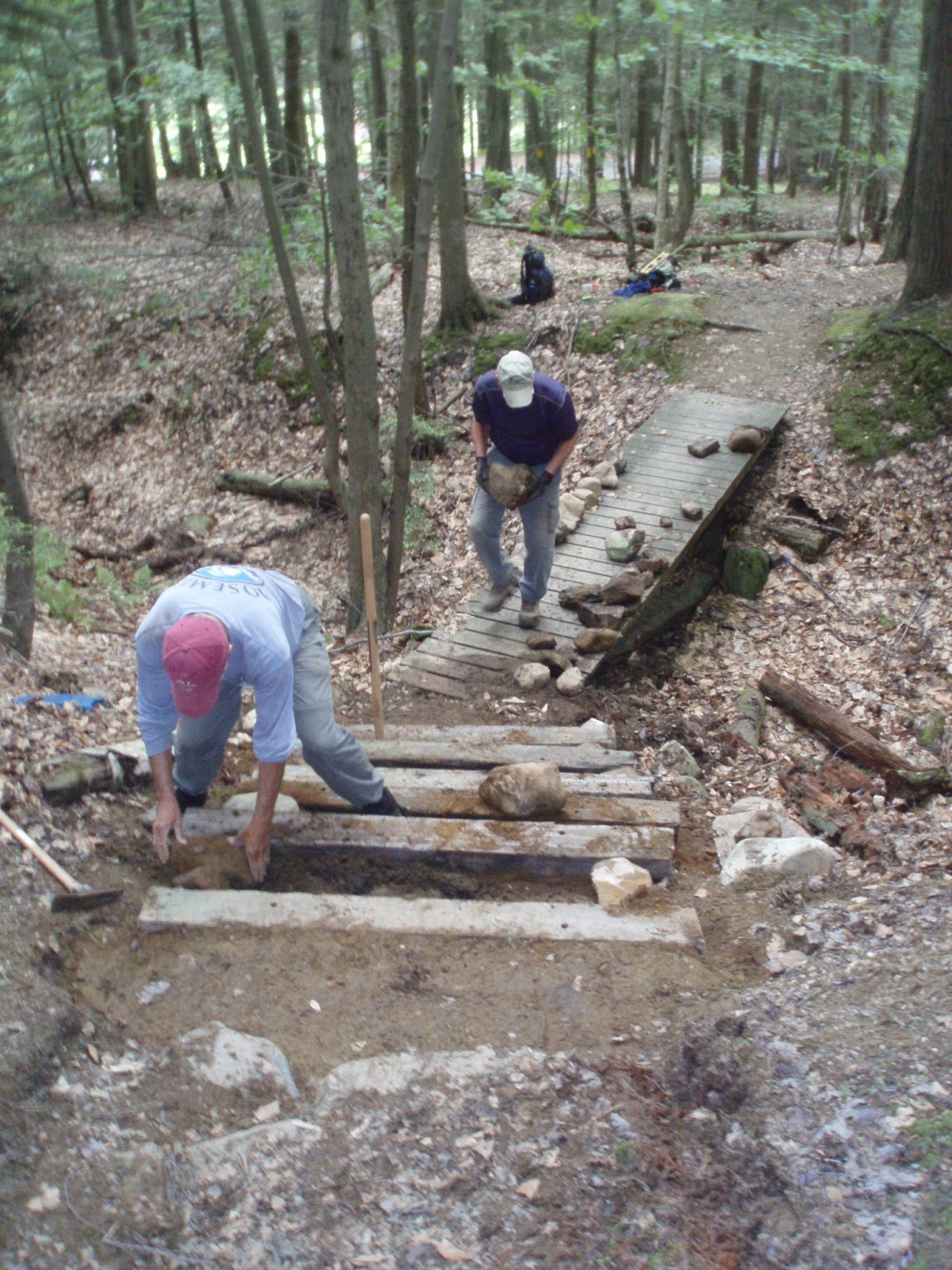More Bog Bridging
Today's project was to get a large load of bog bridge materials to a work site that was pretty remote (for Massachusetts). It is a good mile and a half in from the road, and the AT passes over some pretty rocky terrain on the way. We also had over 75 pieces of lumber to deliver to this distant location.In previous posts, I've gone into some detail about the why's and wherefore's of installing bog bridges, so the topic of this post is about Transportation. This particular work site is so far into the woods that we were definitely considering harvesting some nearby trees to use for materials. However, scouting around we found only a few that were suitable. They needed to be Hemlock (moderately rot resistant and straight of trunk), have a diameter 12" but not more than 18" (larger would be too heavy to move), and provide enough length for the 200ft or so of trail that needed work. They also had to be reasonably close to the worksite and have enough room to fell them without hanging up in other trees. While we did find a few possible candidates, using them would mean that 10 years from now, we'd be in the same situation--but without any suitable trees.
The other issue was that processing (felling, debarking, splitting, transporting, notching and installing) native trees requires a measure of experienced crew power, and we would have needed to devote several project days to this effort--did we really have enough time this season to devote to this one project?
Instead, we decided to use our usual rough-sawn Tamarack lumber and offer the project to any interested service groups. Most service groups can put a fairly large number of people into the field on a given day. While most are not particularly skilled in trail work, they are eager to assist, and enjoy a day outdoors--even if it means carrying pieces of wood and nailing them together in a mud hole.
However, even the most enthusiastic group would find the required 75 3-mile round trips daunting, so we looked for a way to reduce the distance from the materials cache to the worksite.
Our first idea was to make use of a power line right of way that crosses the AT 3/4 mile from the project site. Scouting this access revealed a cliff between the road and the AT that we would not be able to get the materials over. However, a few years ago, the local snowmobile club had cut a trail through the woods that bypassed the cliff so they could ride (illegally) on the power line.
 |
| Don, Steve and Silvia on the power line |
We decided to use a power wheelbarrow to transport several pieces of wood at once. This is essentially a motorized, track driven bin that has a pretty light footprint and can travel over forest duff and occasional wet areas little damage to the ground. It can carry about 400lbs at a time, up some pretty impressive slopes. It is however, very slow and does not handle rocky or uneven surfaces very well.
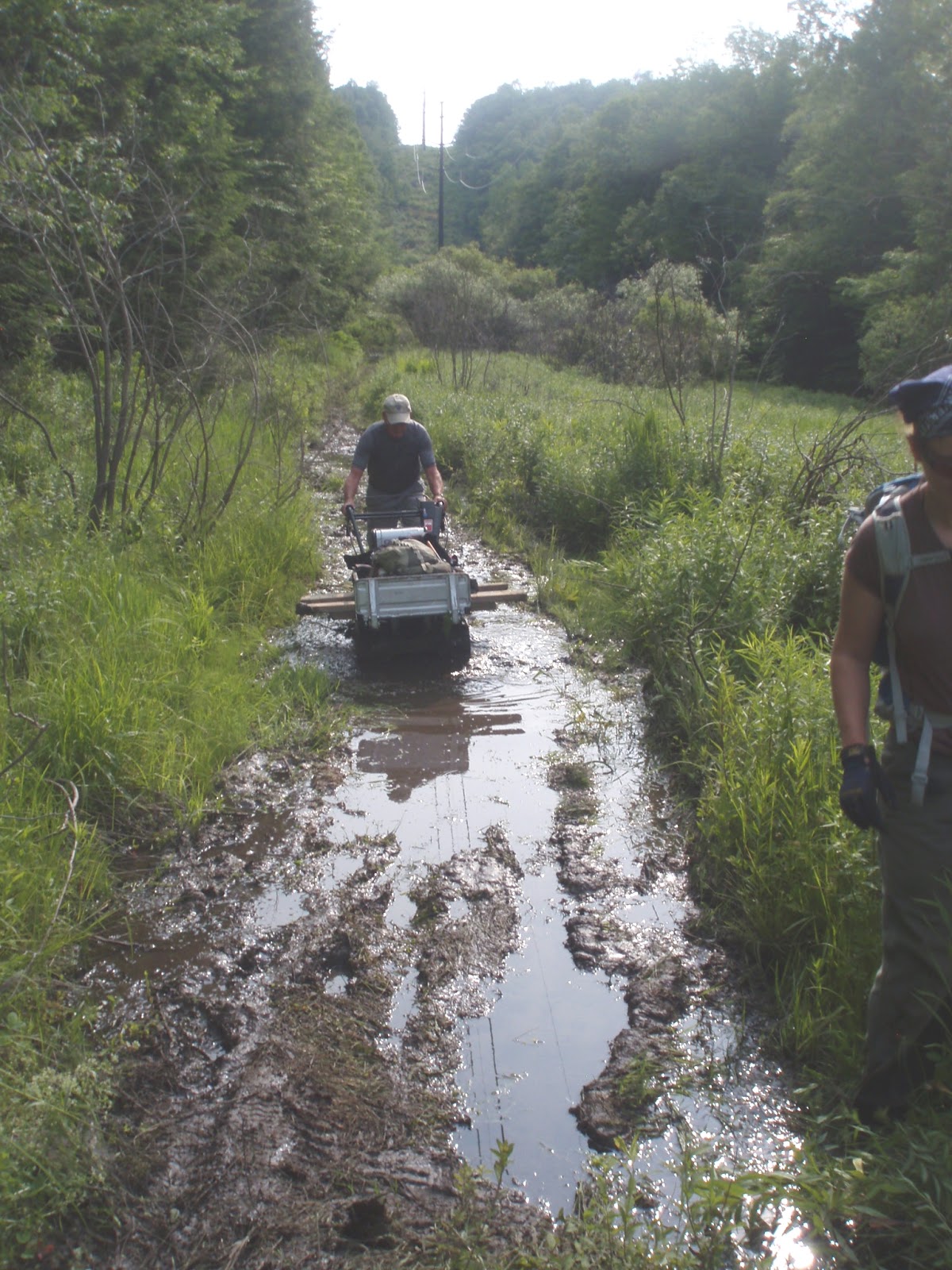 |
| Don returning with an empty wheelbarrow |
The 3/4 miles of power line travel on existing twin track was not without it's challenges. After about 3 weeks of rain, the lower areas of the vehicle track are pretty wet. Muddy water hides two 18" deep trenches left by power company maintenance vehicles. Stay centered to keep the wheelbarrow from sliding into them.
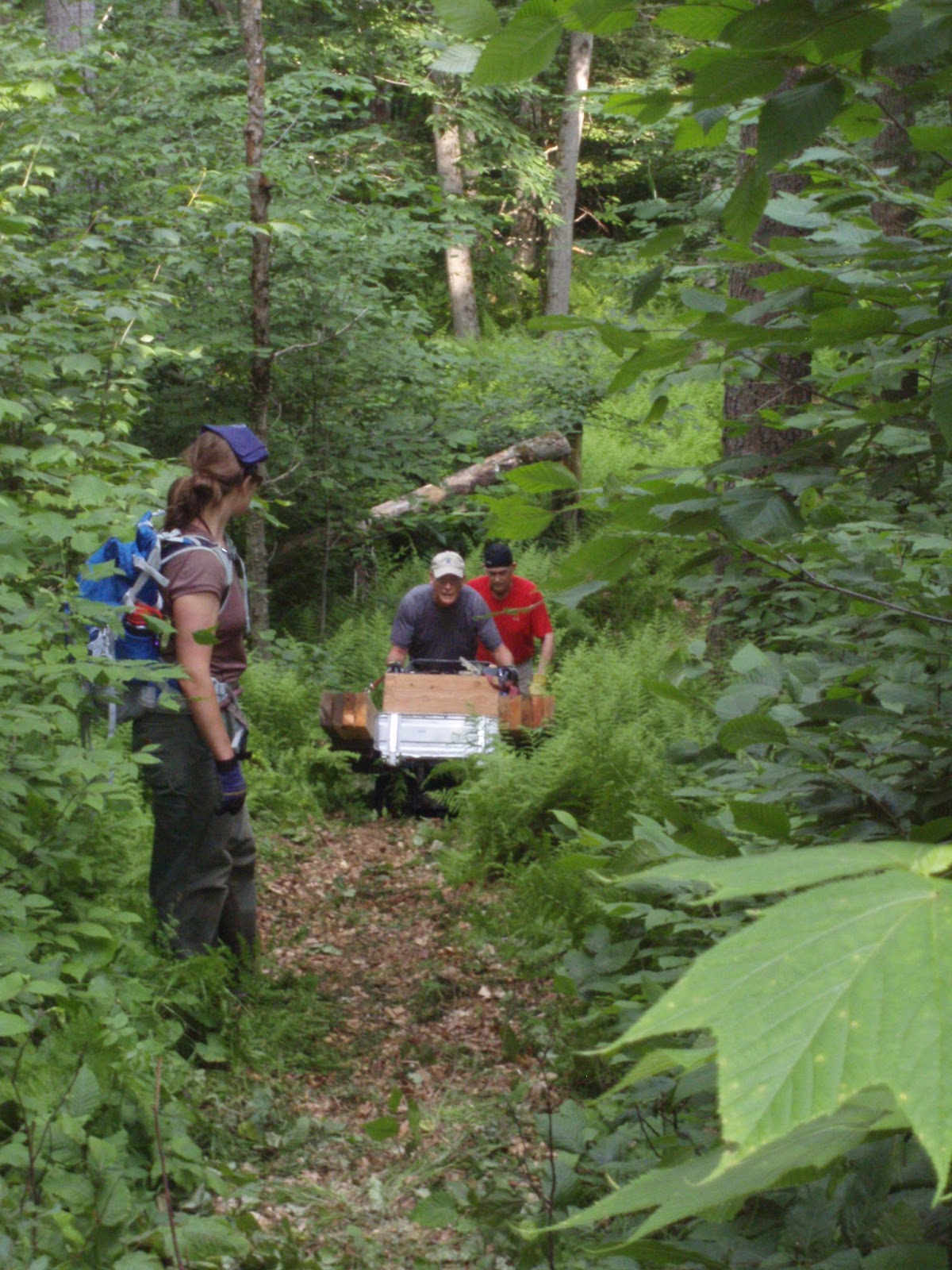 |
| Climbing a steep slope with a load of planks |
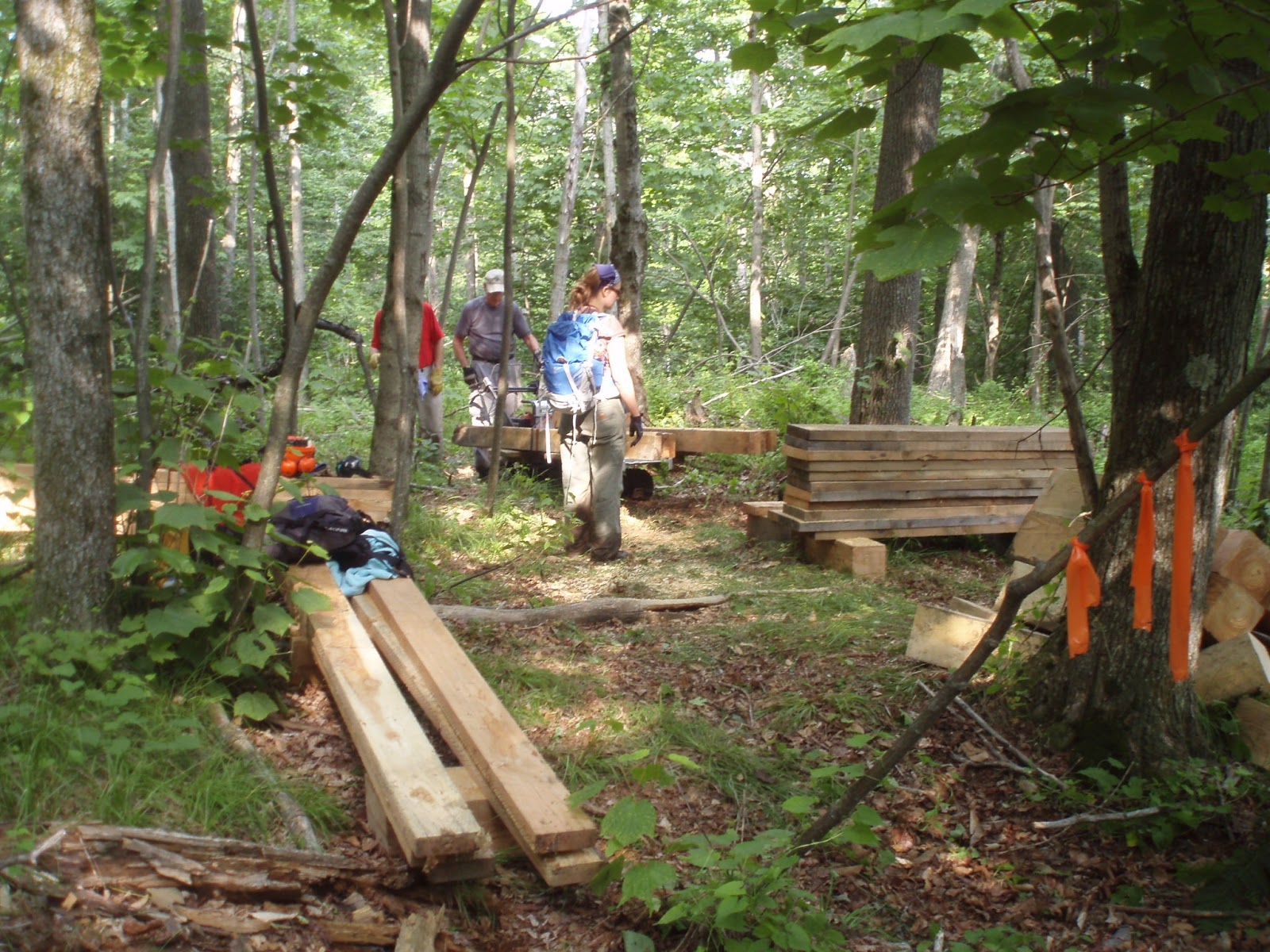 |
| Last load to the drop off point. |
In late July, Scouts from BSA Troop 1 in Pittsfield transported and installed all of the materials on the AT.

